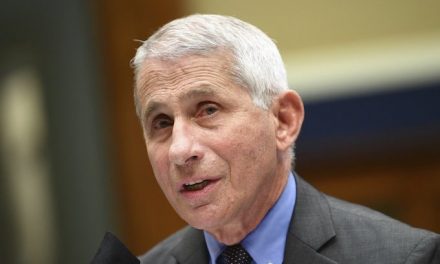Seattle is in a crisis of its own making, with soaring crime in parts of the city enabled by lax enforcement and prosecution.
This is making Seattle unsafe in some neighborhoods. Drug addiction is a root cause but political dysfunction is exacerbating the problem by allowing prolific offenders to repeatedly steal, threaten and attack people with little consequence. This is causing substantial harm, not only to individuals but the city’s appeal as a place to raise families, create jobs and provide opportunity.
There are multiple ways this crisis can be addressed if elected officials muster courage to restore safety and civility.
Credit goes to a coalition of business and tourism organizations demanding that Mayor Jenny Durkan, City Attorney Pete Holmes and others address the criminal-justice system’s shortcomings and make the city safer. Durkan is convening prosecutors, judges and others to solve what they have admitted only recently is a serious problem. That’s the right direction but they never should have allowed things to get so bad.
The coalition commissioned a study that found a substantial share of thefts, assaults and burglaries are being committed by persistent, repeat offenders. They face scant punishment for crimes that often victimize workers, including security guards and retail employees, as well as homeless people living alongside the criminals.
One such victim is a Bartell Drugs pharmacist assaulted downtown.
An immigrant who arrived with $200, he worked his way to a career helping others. In November, he approached a customer appearing to need assistance. Eric Linden was actually stealing merchandise. Linden punched him so hard the injury required two surgeries. The pharmacist, who insisted on anonymity because he fears for his safety, is working again but can’t breathe through one side of his nose, feels pain in cold weather and has sensitivity to sunlight.
“It’s like I’m imprisoned in my own house, I can’t even see the light outside — if I want to open the curtains I have to put on sunglasses,” he said.
Perhaps Linden should have been imprisoned before the attack. He had numerous prior charges, including a theft and assault case for which he was booked Oct. 30 and released Oct. 31, on condition he not reoffend. He was booked for another theft on Nov. 14, violating his release conditions, but released again on Nov. 15. Finally the Nov. 21 Bartells attack led to felony charges and a sentence of 41 months.
While Linden’s address is listed as a homeless service center, it’s important to avoid stereotyping.
The study’s sample of 100 prolific offenders are all homeless but they are not reflective of the entire homeless population. Nor should the harm offenders cause be forgiven because Seattle is so committed to helping the homeless. Compassion and justice are not mutually exclusive.
The region has made progress with responses that differentiate the homeless population. Family homelessness declined after it become a focus, with support from major employers. Foster children are a current focus. Mental health is a major contributing factor and the state is belatedly, under court orders, increasing capacity to assess and treat patients.
Similar focus is needed to address prolific offenders living among the larger homeless population, shielded by misplaced compassion and politics discouraging firm intervention. This demands changes to policies encouraging leniency and diversion from jail for people who consistently reoffend. Nobody is helped by letting them continue a cycle of crime, victimizing others to support an addiction that also harms them.
Failures of Seattle’s justice and social-services programs to change behavior and protect people is clear in the coalition’s study. The 100 prolific offenders in the sample were involved in nearly 3,600 criminal cases. Some repeatedly victimized pockets of the city for months or years with little consequence.
About 20 pose serious public-safety threats, with histories of randomly assaulting people. They were often found incompetent to stand trial but released because misdemeanor offenses don’t warrant involuntary commitment.
One man arrived from Chicago in 2015 with a violent-crime history. He has since been involved in more than 50 criminal cases, mostly on and near the University of Washington campus and Capitol Hill.
Last June, after being arrested for threatening pedestrians with a stick, smashing storefronts and chasing a woman getting off a bus, he was released the next day on personal recognizance. He went back to the U District and was arrested in July and again in August for shoplifting and threatening Safeway employees. Nine days after that he was arrested for assaulting a mother with two young children at a bus stop at Broadway and Pine. In a plea deal, he received what amounted to a 60-day sentence, with 304 days suspended. He has been booked nine more times since his release.
It’s a pattern: When released by courts before trial, virtually all the prolific offenders failed to comply with conditions of their release. When jail sentences were suspended — on condition they take steps to correct behavior, such as regularly checking with courts and complying with probation terms — virtually all failed to comply.
Grit and rough edges have always been part of Seattle’s character. But police records show major increases in crimes in certain neighborhoods.
Excluding auto theft, crime levels last year in Fremont were 56 percent higher than 2014. Crime was 34 percent higher in south Ballard, including a 64 percent increase in crimes against people — such as rape, robbery and aggravated assault. Sodo saw a 39 percent increase in overall crime and 86 percent jump in crimes against people over 2014 levels.
Downtown, where police apply emphasis programs and partner with retailers on theft reporting, overall crime dropped 3 percent. But burglaries rose 64 percent and aggravated assaults rose 60 percent. Put another way: 275 people were victimized by serious assaults downtown last year, up from 172 in 2014.
This occurred as City Hall, prosecutors, advocates and others made political decisions to de-emphasize prosecution of heroin possession, experiment with diverting more offenders away from courts and jails and ignore pollution, property damage and harmful behavior by a troublesome subset of the city’s homeless population.
While intentions are good, the pendulum has swung too far.
Nearly half of all cases police refer to City Attorney Holmes aren’t prosecuted and of those, more than half are subsequently dismissed. Almost no offenders end up sentenced to significant jail time. Roughly 10,000 cases are filed yearly in Municipal Court but the average post-sentence jail population was 43 people last year, according to Presiding Judge Ed McKenna.
That doesn’t include the increasing number of offenders diverted to community oversight programs or treatment programs.
The high rate of dismissals and minimal sentencing sends a message.
Advertising
“It’s no different than raising your kid,” McKenna said. “If your kid realizes there’s no consequences for their actions, they’re going to repeat the same behavior.”
Seattle’s permissiveness was highlighted by a recent KOMO 4 TV documentary examining failures to address the heroin and homeless crises. While melodramatic, it struck a chord with exasperated residents and businesses. The response jolted officials responsible for making the city a safe place to live, visit and do business.
Holmes agrees his office needs to increase its pace of prosecutions. But he said it needs another $1.2 million to $2 million per year for prompt turnarounds.
City Hall could easily afford more prosecutors that Holmes has sought. But instead it funded pet projects. The council recently gave $1 million to social-justice activists opposing incarceration and working to defund probation, something that helps offenders get their lives in order.
Holmes also agreed last year to divert some of his criminal budget to help fund a new legislative program, sponsored by Council Member M. Lorena Gonzalez, to pursue more progressive justice reforms. One recommendation is “decarceration” — further reducing jail time for misdemeanors.
Durkan and the council found plenty of dollars to prosecute employers and enforce compliance with new workplace standards sought by organized labor. The city’s labor standards enforcement team has grown from four to 14 people, including an attorney added this year. Its office funding grew by $4.7 million since 2016.
King County Prosecutor Dan Satterberg, meanwhile, has explored various alternatives to incarceration for low-level drug cases. Even those caught with street dealer amounts of heroin are offered plea deals to convert felony charges to misdemeanors, with sentences as low as a few days. His office doesn’t charge people caught with less than 1 gram.
Seattle’s leniency is a draw for habitual criminals from all over. Criminal histories of the prolific offender sample indicate roughly a third are from Seattle, a third from the greater Puget Sound region and a third from other states, according to author Scott Lindsay, a former public-safety adviser in the Seattle mayor’s office. All appear to have substance-abuse disorders.
That mirrors what Judge McKenna sees in court. When he asks for out-of-state criminal histories, “inevitably they’re almost all from somewhere else,” he said. “It’s not just the Northwest — Alaska, Hawaii, Idaho, all over the country, people are coming here. I see it all the time.” Asked why they’ve come to Seattle, the No. 1 answer is social services and the No. 2 answer is drug leniency, he said.
Contributing factors include societal problems such as poverty, housing affordability and federal underfunding of social services. But these aren’t problems unique to Seattle and don’t excuse local system failures allowing a small number of people to victimize many others.
Durkan’s task force is a good start but leadership must follow up with concrete changes — we’ll suggest some in Monday’s editorial. The status quo is unacceptable.
The Bartells pharmacist sums it up well:
“I’m very disappointed with the city officials for not fulfilling their duties and responsibilities as elected officials, to watch for the safety and security of the community and the people who live in that community,” he said. “They have failed terribly.”
The Seattle Times editorial board members are editorial page editor Kate Riley, Frank A. Blethen, Donna Gordon Blankinship, Brier Dudley, Mark Higgins and William K. Blethen (emeritus).
___
(c)2019 The Seattle Times
Visit The Seattle Times at www.seattletimes.com
Distributed by Tribune Content Agency, LLC.
—-
This content is published through a licensing agreement with Acquire Media using its NewsEdge technology.


















Recent Comments